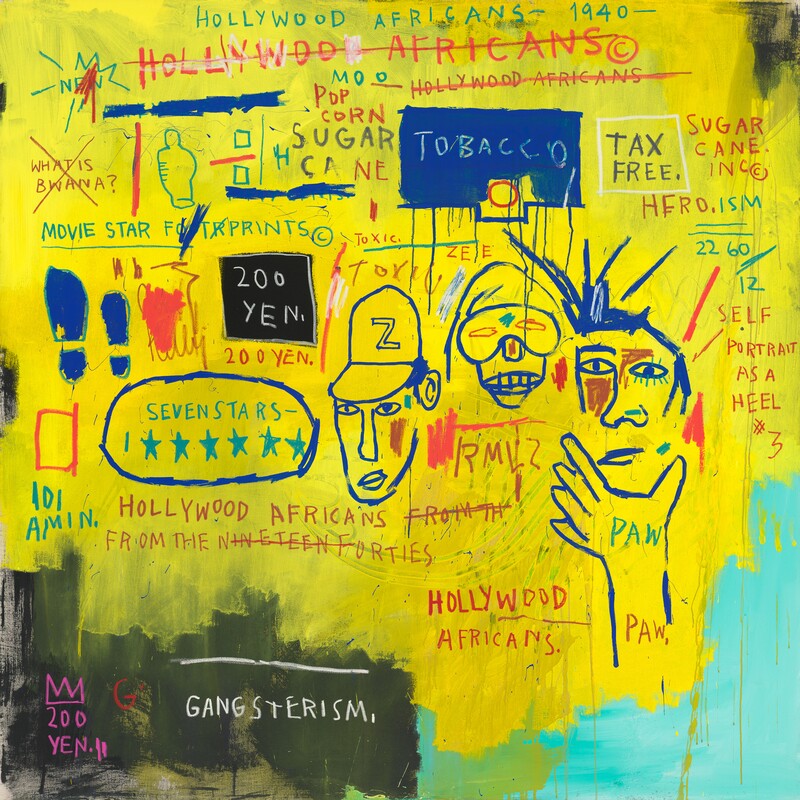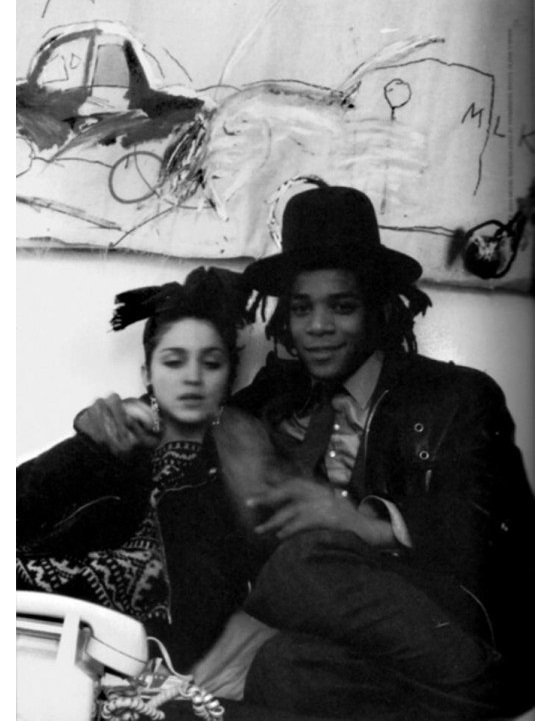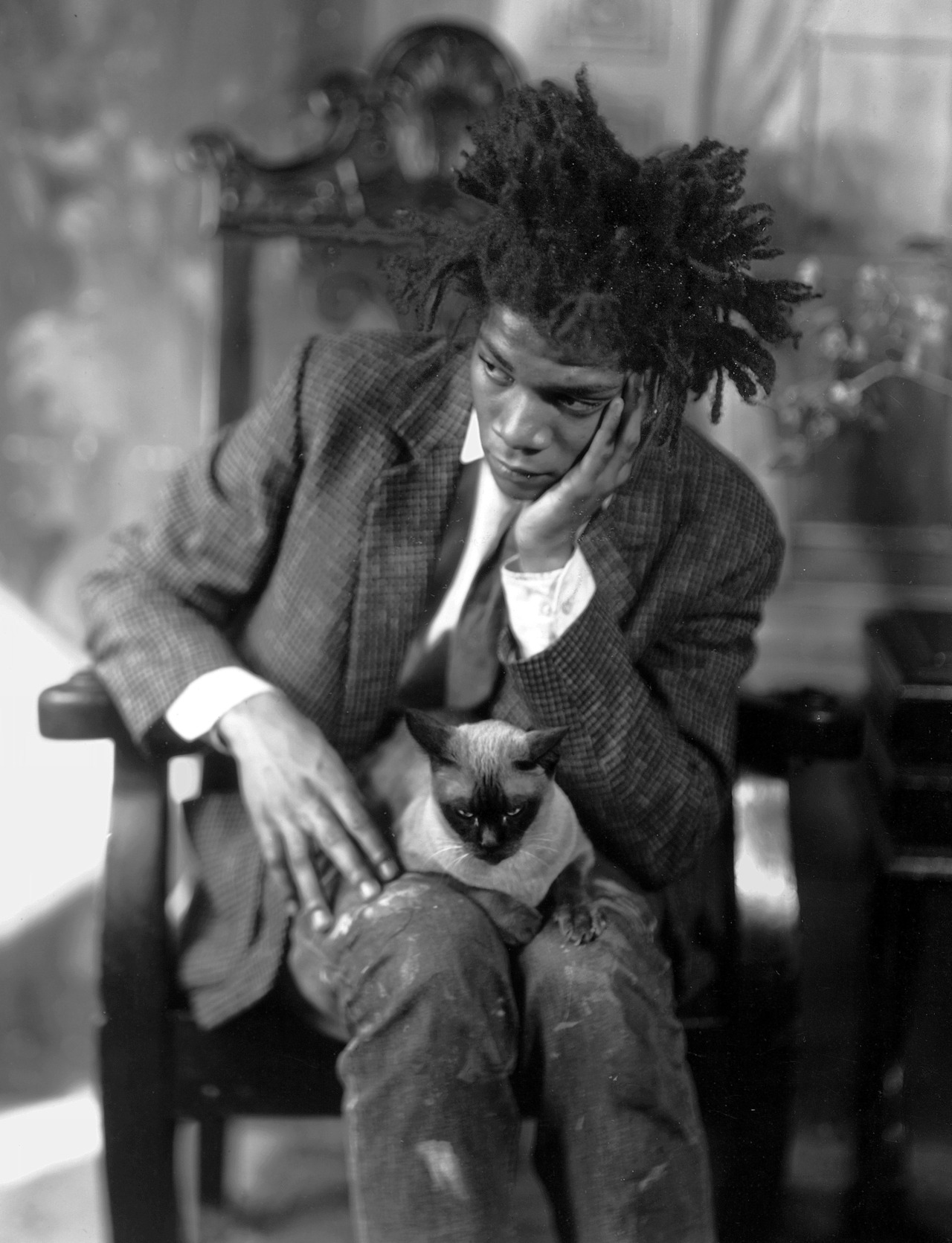57 Great Jones Street
57 Great Jones Street today via
In the few days I’ve been working on this post, I’ve only been able to scratch the surface of the fascinating story of 57 Great Jones Street and the people who occupied the space over the centuries: an infamous gang and one of America’s most famous black artists.
In 1845, a New York doctor named Benjamin Bailey bought the parcel of land on the corner of Bowery and Great Jones Street in lower Manhattan. When exactly the building that now stands at 57 Great Jones appeared isn’t clear, but by 1851, tax records and contemporary street directories show that a fruit dealer and a builder were renting out space in the building. Between 1869 and 1901, the building served as an architect’s office, an auction house, and a furniture store.
57-59 Great Jones Street, from the 1898 Atlas of the City of New York via
In 1904, a man named Paul Kelly opened the New Brighton Athletic Club. Paul Kelly’s real name was Paolo Antonio Vaccarelli-- a boxer who used his earning to found the notorious Five Points Gang, of which Lucky Luciano and Al Capone were members. The New Brighton Athletic Club took advantage of New York legal loopholes allowing boxing matches in privately chartered clubs, and Kelly expanded to the adjacent building at 59 Great Jones to open a dining hall, the Little Naples Cafe, to feed his patrons. The club and cafe would serve as a front to recruit members into the gang.
The Little Naples Cafe and the New Brighton Athletic Club, circa 1905 via
The Five Points Gang had the backing of Tammany Hall, which controlled New York politics for decades; the gang stuffed ballot boxes and intimidated voters to keep their preferred city officials in power. However, the support of politicians wasn’t enough to keep the gang’s headquarters out of trouble. In 1905, a prolonged gunfight with a rival gang in front of the Little Naples Cafe and complaints from the public led to closure of 57 and 59 Great Jones Street. Kelly changed his name back to Vaccarelli and moved uptown.
In the years after the New Brighton Athletic Club was padlocked, Dr. Bailey’s descendants sold the land. For years it housed a metal works business and a kitchen supplies company before it was bought in 1970 by-- of all people-- Andy Warhol.
In 1982, Warhol was introduced to a young, up-and-coming artist who painted under the pseudonym Samo: Jean-Michel Basquiat. Basquiat, half-Haitian and half-Puerto Rican from an upper-middle class family in Brooklyn, ran away from home at the age of 16. He moved from couch to couch for years, soaking up the post-punk, early 80s bohemia of lower Manhattan; he was part of a band, sold hand-painted postcards to tourists, and graffitied buildings with his friend, Al Diaz.
Young Jean-Michel Basquiat via
1981 was Basquiat’s breakout year in which his Neo-Expressionist style became more established. His work, under the name Samo, was displayed as part of the PS1 New York/New Wave show. Visitors described getting goosebumps when they saw his work, sure that this artist was going to be huge. By the end of the show, people were approaching Basquiat to buy his paintings; he was only 20 years old.
Untitled, 1982 via
In the aftermath of New York/New Wave, Basquiat dropped out of his band, fell out with his friend Diaz, and sprayed SAMO IS DEAD all over lower Manhattan. His first art dealer helped get him into a show in her SoHo gallery, alongside artists Barbara Kruger and Keith Haring. His paintings sold for $2500 a piece ($6500 today); he got his own show the following year, along with a studio.
From there, Basquiat took off. He made $30,000 selling painting to a gallery in Milan. He did a stint in Venice Beach, where he brought his then-girlfriend Madonna to spend Christmas in 1983, who was months away from stardom of her own. He was known for painting in designer suits and throwing hundred dollar bills to the homeless. He’d also developed an expensive heroin habit, allegedly dropping tens of thousands of dollars a time. He told a friend, “The true path to creativity is to burn out.”
Basquiat and Warhol grew increasingly close after their introduction, and Basquiat moved into the loft at 57 Great Jones Street in 1983, renting it from his idol. In 1985, the art dealer who introduced the pair convinced them to do a collaboration together. Warhol hadn’t painted since 1962, and the show was not received well (the Christian Science Monitor wrote that it was “some of the most atrocious pictures anyone ever had the nerve to call art”). Basquiat was called Warhol’s mascot, used by Warhol to regain relevance.
Warhol and Basquiat at their collaborative show, 1985 via
After the show, resenting being seen as Warhol’s protege, Basquiat stopped returning Warhol’s calls and withdrew from his friends. After Warhol’s sudden death in 1987 before they had the chance to reconcile, Basquiat’s behavior became more erratic, his drug use more frequent and destructive. He was convinced that Warhol’s estate sought to evict him from his apartment (in fact, the attorney for the Warhol estate was instructed to sell the place to Basquiat at a discounted price), and his finances were messy; he paid for most things with his artwork; he hadn’t paid taxes in four years and never owned a bank account. Since he used his art as payment, he worked quickly, slapping his name on pieces in exchange for drugs, then shooting up in response from criticisms that the quality of his work was declining.
Basquiat told friends he planned to quit painting and leave New York-- maybe move to Hawaii, where he’d gone a few times to get clean. In the summer of 1988, he went to Hawaii for the last time. When he returned, he was off the heroin, in high spirits, and determined to start a new life as a writer or a tequila-maker. Friends to whom he’d never mentioned his drug use were surprised to hear him talk about being clean, happy. But on August 12, a week before a planned trip to a village in the Ivory Coast, he was high again. Just a binge before quitting, he said. His girlfriend found him dead in the apartment the next day.
Today 57 Great Jones Street is home to a Japanese butcher shop and an invite-only Japanese restaurant called Bohemian. In 2016, a plaque commemorating Basquiat was installed: “Basquiat’s paintings and other work challenged established notions of high and low art, race and class, while forging a visionary language that defied characterization.”
Sources
Burning Out, Vanity Fair
The Former New Brighton Athletic Club, Atlas Obscura
The Devil on the Door, New York Magazine
The Jean-Michel Basquiat I Knew…, The Guardian
Jean-Michel Basquiat Commemorative Plaque, Atlas Obscura
The First Major UK Basquiat Exhibition is Coming, Dazed
Basquiat: A Quick Killing in Art, NY Times Books
Gangsters and Artists on Great Jones Street, Off the Grid
American Graffiti, British Vogue
NoHo Extension report, NYC Landmarks Preservation Commission
Basquiat’s Place: How a Site of Mob Beef Became a Boutique Butcher Shop, Bedford + Bowery
Paul Kelly’s Little Naples Cafe and New Brighton Athletic Club, Infamous New York
Gangster Haunts of the East Village and LES: What Are They Now?, Bedford + Bowery
Paul Kelly (Criminal), Wikipedia https://en.wikipedia.org/wiki/Paul_Kelly_(criminal)
Five Points Gang, Wikipedia
















